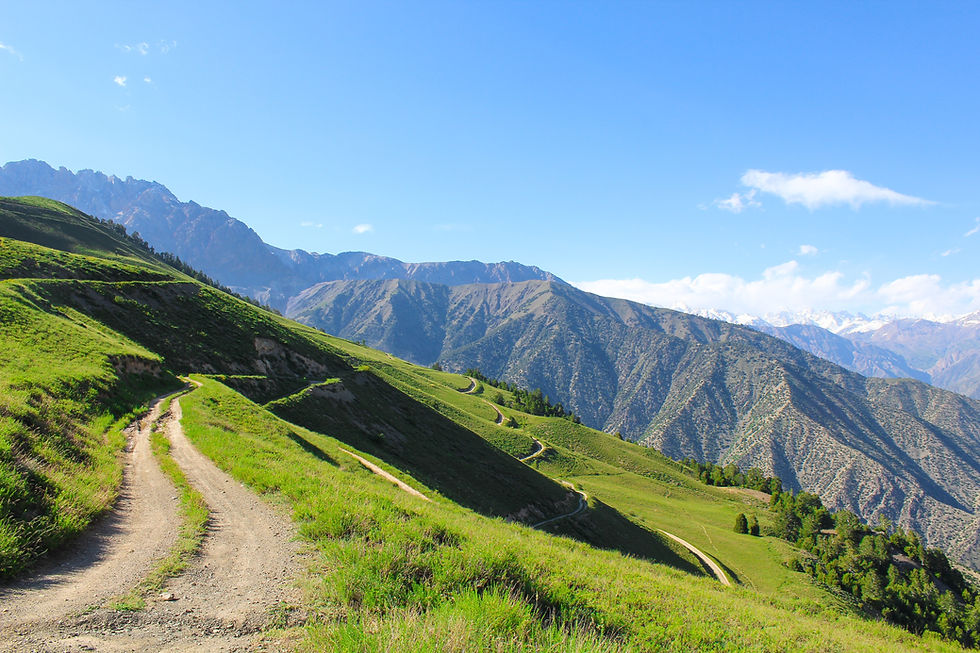Shilajit and Anti-Aging: Is It a Natural Miracle Cure?
- ShilajitUniverse

- 18. feb.
- 4 min lesing
Shilajit, a resinous substance that naturally forms in the mountains of the Himalayas and Karakoram, has been used for thousands of years in traditional medicine, especially in Ayurveda. It is known for its high content of fulvic acid, minerals, and other biologically active compounds. Many claim that Shilajit can help slow down the aging process, improve skin health, and support the body's natural healing processes. But is it truly a "miracle cure" for aging, or are these claims exaggerated? This article takes a closer look at Shilajit, its potential anti-aging properties, and what science has to say.
What is Shilajit?
Shilajit is a complex of organic material and minerals formed when plants and other organic matter break down in the mountains over thousands of years. It is rich in fulvic acid, a potent antioxidant known for its ability to protect cells from oxidative stress – a key process linked to aging. Shilajit also contains a range of vitamins, minerals, and amino acids essential for the body’s health and function.
Shilajit has traditionally been used in Ayurvedic medicine as a "rasayana" – a remedy that strengthens the body and promotes longevity. The health claims surrounding Shilajit are vast, ranging from improving energy and endurance to helping combat aging.
Shilajit and Anti-Aging: What Does the Research Say?In recent years, researchers have begun investigating the claimed health benefits of Shilajit, including its potential effects on aging. Although research on Shilajit is still limited, there are several studies indicating that it may have certain properties that could contribute to slowing down the aging process.
Antioxidant Effects and Protection Against Oxidative Stress
One of the most prominent mechanisms that Shilajit is believed to use in combating aging is its ability to counteract oxidative stress. Oxidative stress is a condition where the body has too many free radicals – unstable molecules that can damage cells and tissues, and are linked to aging and the development of various diseases, including heart disease, diabetes, and cancer.
Shilajit is rich in fulvic acid, which is known for its powerful antioxidant properties. A study published in The Journal of Ethnopharmacology in 2011 found that Shilajit had the ability to reduce oxidative stress in animal models, which could potentially protect cells from damage and slow down the aging process (1).
Improved Mitochondrial Function
Mitochondria are the body’s "energy factories," and they play a critical role in the aging process. As we age, mitochondrial efficiency decreases, leading to reduced energy and increased production of free radicals.
Another important effect that Shilajit may have is its potential to improve mitochondrial function. A study published in Andrologia in 2016 showed that Shilajit could increase ATP (adenosine triphosphate) levels in cells, which is the primary energy source for the body’s cells. Improved mitochondrial function can lead to increased energy, better endurance, and a more youthful physiological state (2).
Support for Cognitive Health
Aging is often associated with the loss of cognitive function, including memory and mental clarity. Shilajit has been studied for its potential neuroprotective properties, which may help protect the brain from aging-related diseases such as Alzheimer's.
A preclinical study from 2012, published in The Journal of Alzheimer's Disease, suggested that Shilajit could inhibit the formation of beta-amyloid plaques in the brain, a characteristic feature of Alzheimer's disease. Researchers speculate that Shilajit may support brain health by reducing inflammation and oxidative stress, both of which are important factors in the development of neurodegenerative diseases (3).
Improvement of Skin Health
One of the most popular claims about Shilajit is that it can improve skin health and reduce visible signs of aging, such as wrinkles and fine lines. This could be due to Shilajit’s high mineral content that supports the skin’s structure and health, as well as its antioxidant properties, which protect against environmental damage.
Although there are some anecdotal reports of improvements in skin appearance, more research is needed in this area. Currently, there is insufficient scientific evidence to conclude that Shilajit has a direct effect on the skin.
Is Shilajit a "Miracle Cure" for Aging?Despite the promising findings, it is important to understand that Shilajit is not a miracle cure. While it has some promising properties, it should not be viewed as a "quick fix" for aging. Research is still in its early stages, and most studies have been conducted on animals or in laboratories, not on humans. Although Shilajit may have potential as a natural supplement to support health and slow down aging, it is not a replacement for healthy lifestyle choices, such as a balanced diet, regular physical activity, and adequate sleep.
Shilajit may have potential as a supplement supporting anti-aging based on its antioxidant activity, ability to improve mitochondrial function, and protection against cognitive decline. However, it is important to be realistic about the actual health benefits and to be aware that more research is needed before we can draw definitive conclusions. Shilajit should be considered as a supplement to a healthy lifestyle, not a miracle cure for aging.
Sources:
Ghosal, S., et al. (2011). "Shilajit: A Natural Phytochemical with Antioxidant Activity." Journal of Ethnopharmacology.
Dey, S., et al. (2016). "Effect of Shilajit on Mitochondrial Function in Mice." Andrologia.
Kulkarni, S. K., et al. (2012). "Protective Effect of Shilajit on Alzheimer's Disease: Preclinical Study." Journal of Alzheimer's Disease.



Kommentarer